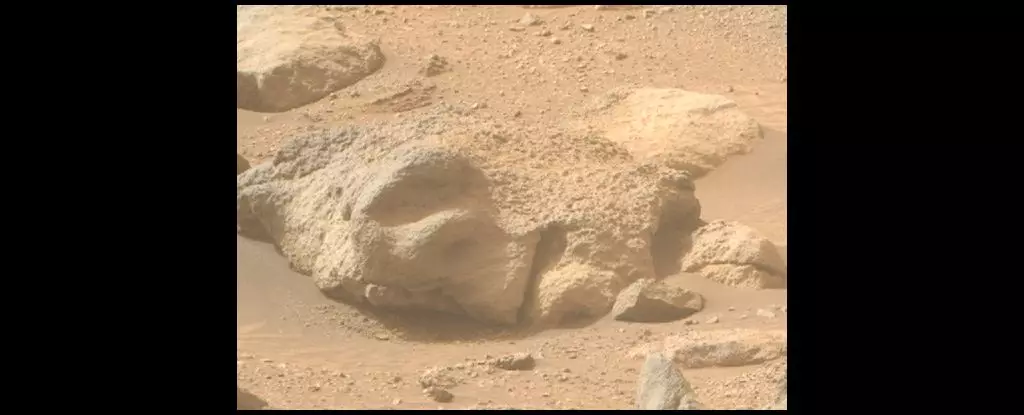Mars has long captivated humanity’s imagination, serving as a canvas for our hopes, fears, and even our wildest conjectures about extraterrestrial life. The recent discovery made by NASA’s Perseverance rover adds yet another intriguing chapter to the ongoing narrative. An image captured on September 27, 2024, features a rock formation that, at first glance, resembles a decaying human head, creating a stir among enthusiasts and skeptics alike. However, beneath the surface of this eerie likeness lies a deeper exploration of our perception and understanding of the Martian landscape.
The unsettling resemblance to a human head is a result of a psychological phenomenon known as pareidolia, where the brain attempts to find familiar patterns in random stimuli. This remarkable effect reveals something significant about human psychology; our innate tendency to recognize faces often clouds our judgment when interpreting visual information. It urges us to impose order onto chaos, but in doing so, it can lead us down a rabbit hole of misconceptions. The “head” observed in the Martian dust is nothing more than an eroded chunk of sandstone, albeit one that evokes a visceral response due to its uncanny semblance to human features.
Pareidolia is not confined to the Martian landscape; it extends into our everyday lives on Earth. From cloud formations that appear like animals to seemingly humanoid shapes in rock faces, our brains are wired to see what we want to see. Iconic cases include the so-called Badlands Guardian—an image of a human-like figure in Canada’s Alberta region—or the whimsical faces appearing in grains of sand under the right lighting. These instances celebrate human creativity and imagination but also underline the inadequacies of our perception.
A Geological Perspective
Mars is a world sculpted by the relentless forces of nature, including wind, temperature fluctuations, and possibly water flows in its distant past. The rock formations observed by the Perseverance rover are consistent with Martian geology, focusing on sedimentary processes that have long fascinated scientists. Sedimentary sandstone, like the one captured in the photograph, is common in areas where water may have existed and played a role in shaping the landscape over eons.
While the appearance of the “head” is arresting, it serves as a reminder that the geological history of Mars is diverse and rich. Understanding these formations offers insights into the planet’s environment and the conditions that once might have supported life. The process of erosion has crafted myriad shapes over millions of years, leading to ephemeral illusions that ignite our curiosity but should not mislead us.
Despite the trickery of pareidolia, the core quest on Mars is not merely to decipher strange shapes, but to uncover the possibility of past or present life. The allure of extraterrestrial existence is a compelling driver of human exploration. Future manned missions are in the pipeline, aiming to explore the Martian surface deeper and to answer profound questions that have lingered for centuries. The hope is that human presence may uncover tangible evidence of life or, at the very least, provide a comprehensive understanding of the planet’s environmental history.
However, the scientific community remains cautious. Previous explorations have yet to yield concrete evidence of life, complex or otherwise. The mystery that surrounds Mars offers both inspiration and skepticism, keeping scientists engaged in this compelling field of study.
In the grand narrative of space exploration, pareidolia serves as a fascinating, albeit misleading, instance of anthropocentric curiosity. The illusion echoed by the Perseverance rover’s imagery reminds us not only of our desire to find familiarity in the unknown but also of the role our own perceptions play in interpreting the cosmos. As we move closer to potentially answering the vital question of whether life ever thrived on Mars, we understand that the most intriguing findings might just be the result of our minds seeking familiar stories in the embrace of the universe’s vast and enigmatic canvas.


Leave a Reply